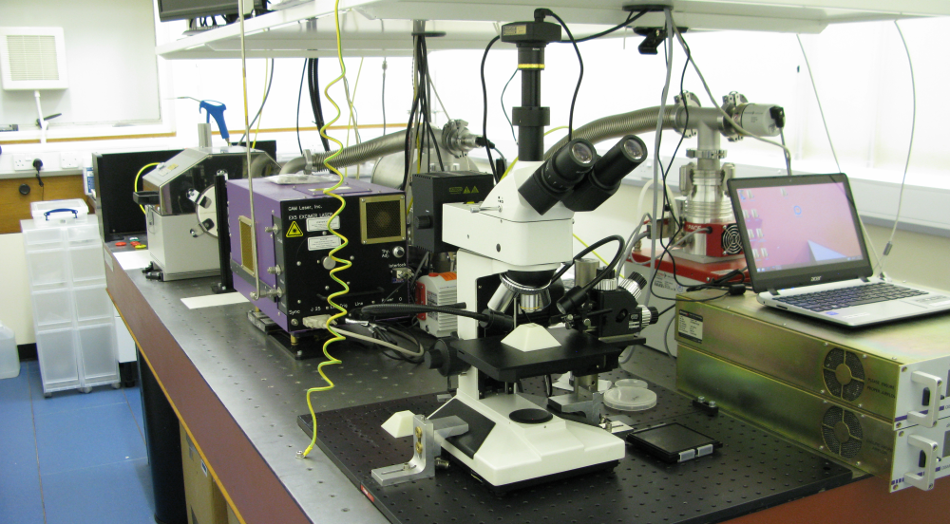Facilities
Facilities:
Synthesis Laboratory
The CXS Synthesis laboratory is primarily used for the synthesis of nanometre scale crystals and device structures. Pulsed laser deposition (PLD) permits the synthesis of complex transition metal-oxide materials such as vanadates, cuprates and manganites as thin films or as heterostructures. Our laboratory houses a 248 nm KrF and a 193 nm ArF excimer laser, both of which are routinely used for pulsed laser deposition and laser-assisted fabrication. The CXS Synthesis laboratory is also equip with two thermal vacuum tube furnaces and various gases for nanoscale crystal synthesis via thermal CVD. The synthesis equipment is supported by an optical table and accompanying overhead rack for electrical equipment.
X-ray Diffraction Laboratory
Diamond Light Source
The Diamond Light Source is the UK’s national synchrotron science facility, located at the Harwell Science and Innovation Campus in Oxfordshire. The facility is used by over 3,000 academic and industrial researchers across a wide range of disciplines including structural biology, energy, engineering, nanoscience and environmental sciences. We utilise this facility for Coherent X-ray Diffraction Imaging experiments.
SACLA
To gain a full understanding of physical and biological phenomena, we need to look at the way atoms and molecules are structured and function, and how the electrons within them move. Being able to directly observe the arrangement and movements of these atoms and electrons would enable us to develop drugs for hard-to-cure diseases and to study ultra-fast structural processes. The SPring-8 Angstrom Compact Free Electron Laser (SACLA) is the most compact X-ray Free Electron Laser (XFEL) facility in the world, and is also now the only XFEL operating below 1 Å wavelength. SACLA was built jointly by RIKEN and JASRI as one of the Key Technologies of National Importance, and was completed in March 2011. SACLA's benefits include short wavelength and femto-second pulse-width, enabling the observation of living organisms and materials at the atomic level.


